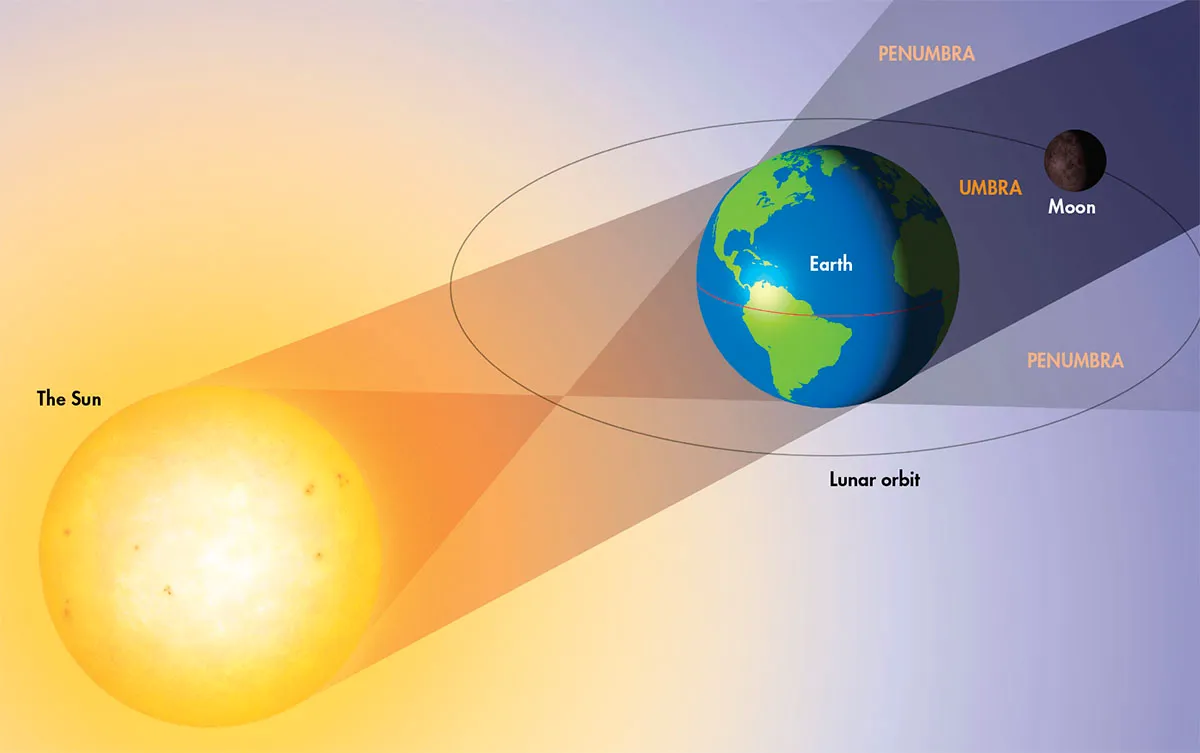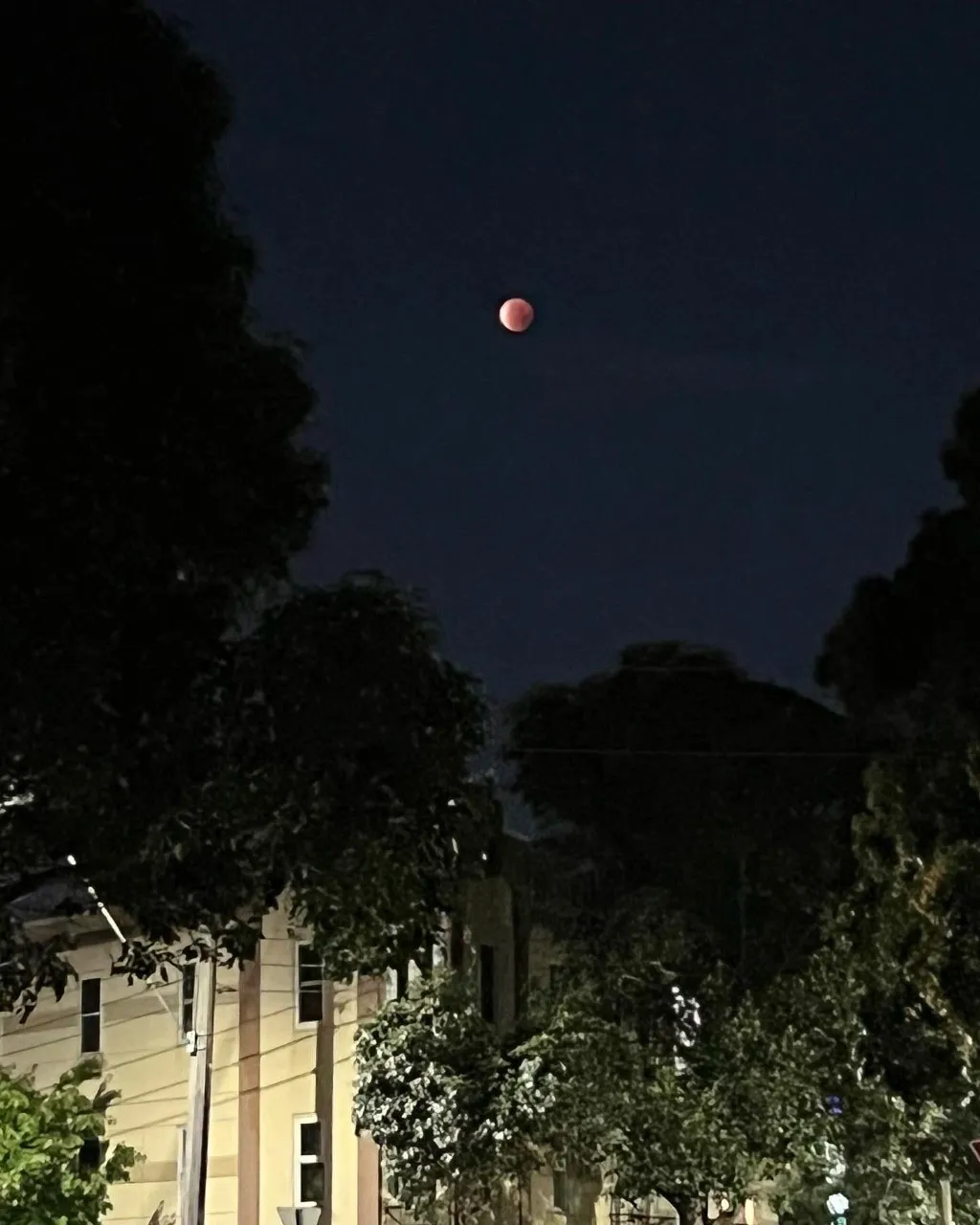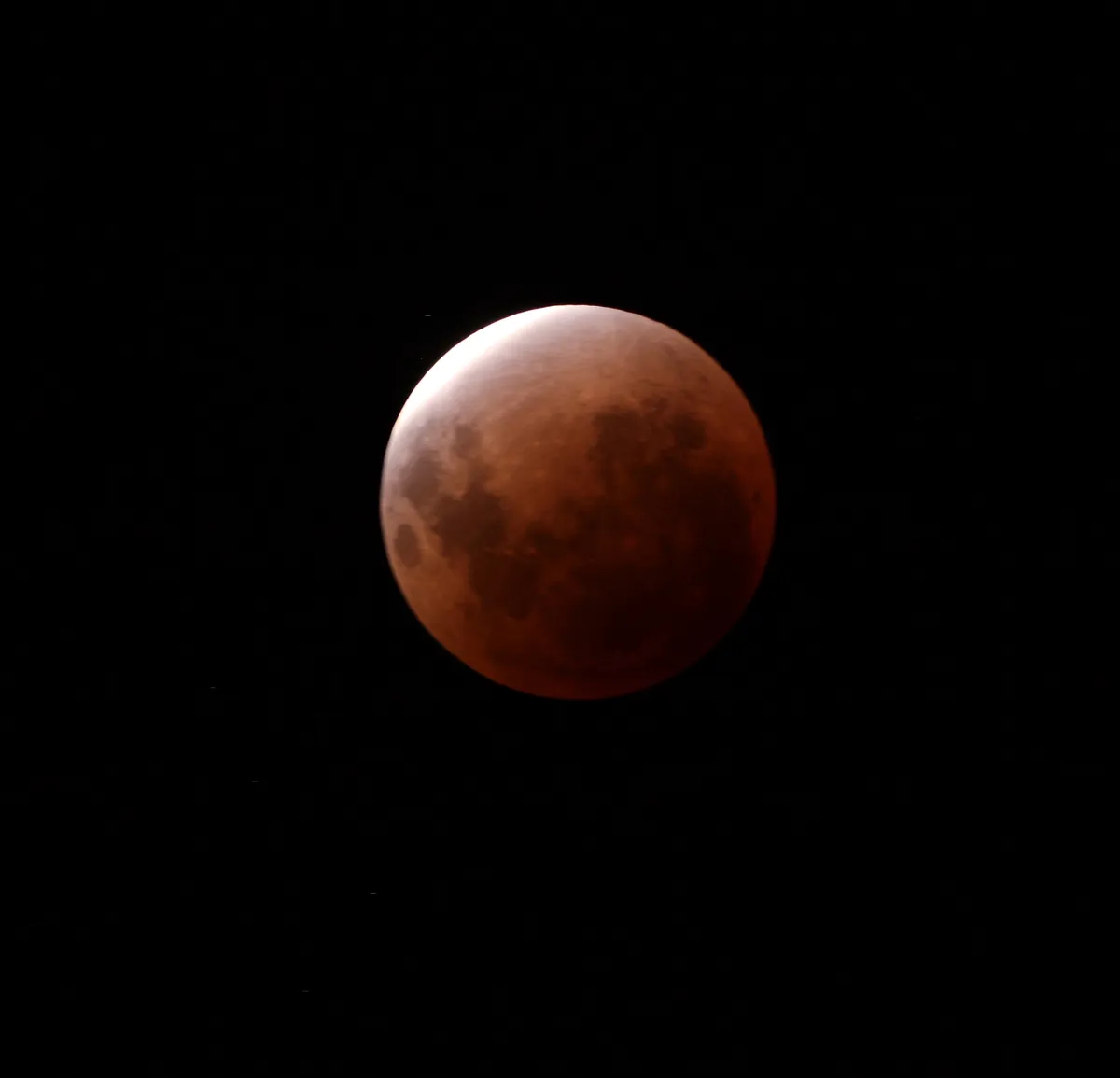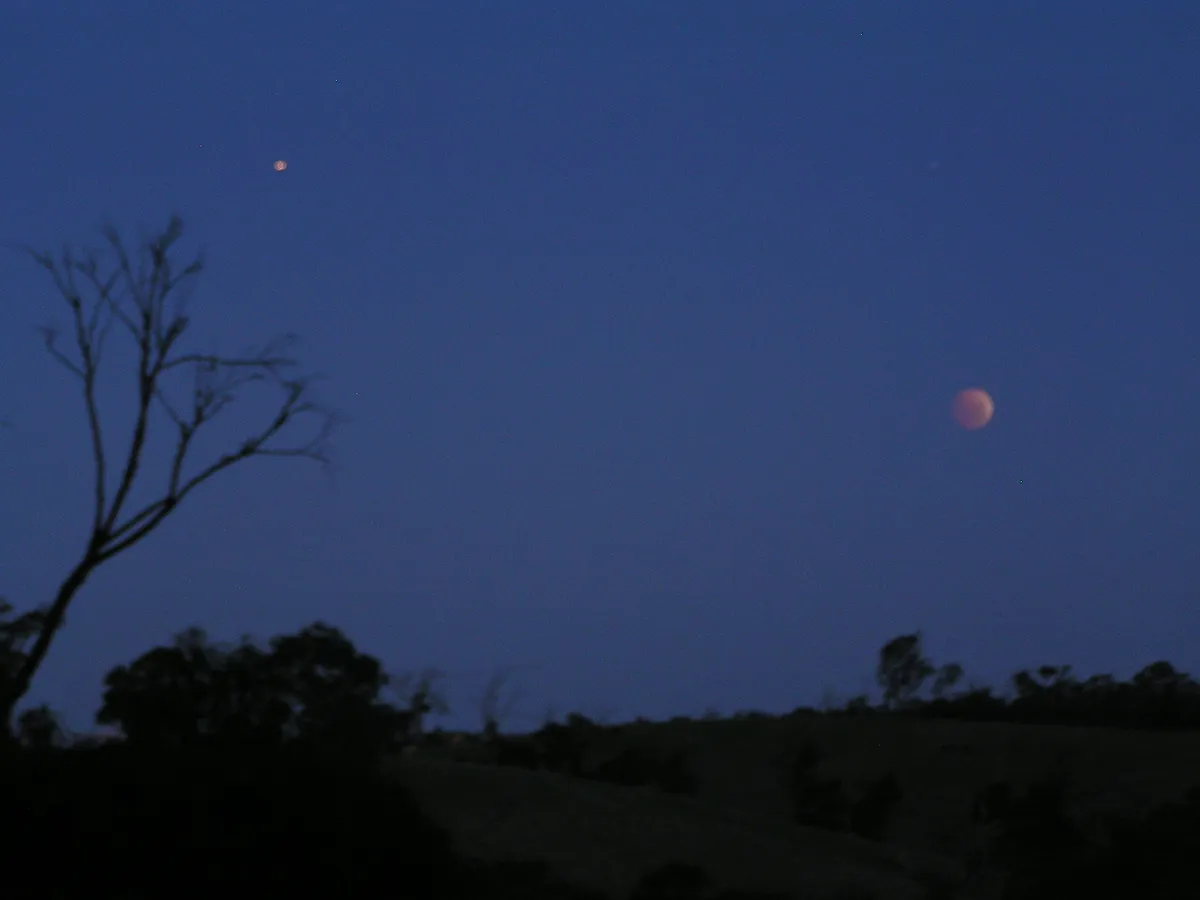A 'blood Moon' total lunar eclipse will be visible across Australia and new Zealand in the early hours of 8 September 2025.
During a total lunar eclipse, the Moon darkens and turns a rusty red colour, making for a beautiful sight easily seen with the naked eye.
Find out what else is visible in the sky this month with our Southern Hemisphere stargazing guide.
And unlike a solar eclipse, no eclipse glasses or other special equipment is needed to see a lunar eclipse.
Here we'll explore what a lunar eclipse is, what you'll see during the event and key timings for observing the September 2025 blood Moon in Australia and New Zealand.

Blood Moon explained
A lunar eclipse occurs when Earth is positioned between the Sun and the Moon.
You may have realised that these are the same conditions as a full Moon: the Sun, Earth and Moon are positioned so the whole of the Earth-facing side of the Moon is illuminated by sunlight.
But most months during full Moon, the alignment isn't quite exact enough to cause a lunar eclipse.
However, when the alignment is just right, we're able to see Earth's shadow, cast by sunlight, projected on to the Moon.
This is a lunar eclipse.

Sometimes only a portion of Earth's shadow hits the Moon. This is a partial lunar eclipse.
And sometimes the whole of the lunar disc is bathed in Earth's shadow. This is a total lunar eclipse.
On 8 September 2025, a total lunar eclipse will be visible from Australia and New Zealand.
What's more, the Moon is approaching perigee, which is the point in its orbit when it's closest to Earth (and why the October, November and December 2025 full Moons will be 'supermoons').
That means the Moon will technically look slightly bigger than usual, which can only be a good thing, for a lunar eclipse.

Key timings
The partial phase of the lunar eclipse – the point when Earth's shadow begins to creep across the surface of the Moon – begins at 02:27 AEST (00:27 AWST).
Totality – when the whole of the Earth-facing side of the Moon is basked in Earth's shadow – occurs at 03:31 AEST (01:31 AWST).
Earth’s shadow covers the whole Moon until 04:53 AEST (02:53 AWST), with the latter partial phase ending at 05:57 AEST (03:57 AWST).
This means that all of Australia will get to see the blood Moon total lunar eclipse on 8 September.
New Zealanders, however, won't get to see the whole thing, because the Moon will have set before the lunar eclipse finishes.
Find out exactly when the lunar eclipse is visible from your location by checking TimeAndDate.com.

What you'll see
During a total lunar eclipse, Earth's shadow begins to creep across the surface of the Moon.
The Moon darkens as this happens, and can also turn a rusty red colour, which is why it's often known as a 'blood Moon'.
"It will be a moderately dark eclipse," says Glenn Dawes, our resident Southern Hemisphere stargazing expert, "the northern limb of the Moon reaching the shadow’s centre, mid-eclipse, at 04:12 EST (02:12 AWST) and the southern limb remaining slightly brighter."

The reddening that gives the 'blood Moon' its name happens because sunlight is passing through Earth's atmosphere on its way to the Moon.
And as that light passes through our planet's thick atmosphere, it's refracted, causing it to appear red.
You don't need any eclipse glasses to observe a lunar eclipse, and you should see it perfectly well – weather permitting – with the naked eye.

While you're observing the lunar eclipse, you may notice a bright 'star' above and to the right of the Moon.
This is the planet Saturn, which is visible with the naked eye at the moment because it's approaching opposition on 21 September 2025.
The lunar eclipse and Saturn together could make for a great photo opportunity. For more info, read our guide on how to photograph a lunar eclipse.
And if you miss this one, don't worry. The next total lunar eclipse visible from Australia and New Zealand will be on 3 March 2026.
Share your lunar eclipse experience and images with us by emailing contactus@skyatnightmagazine.com
